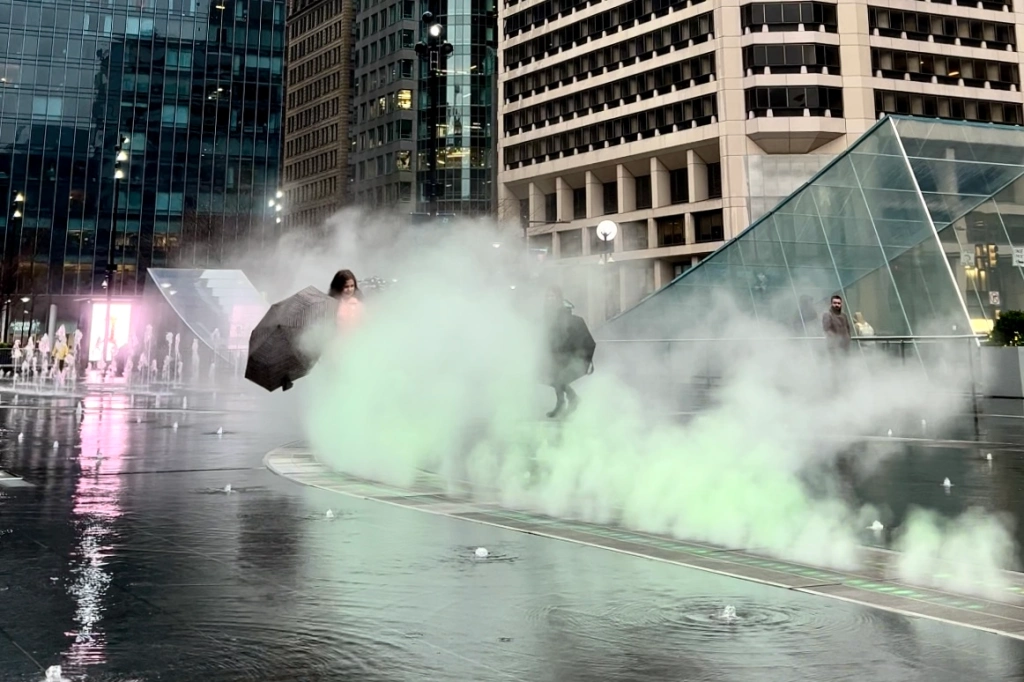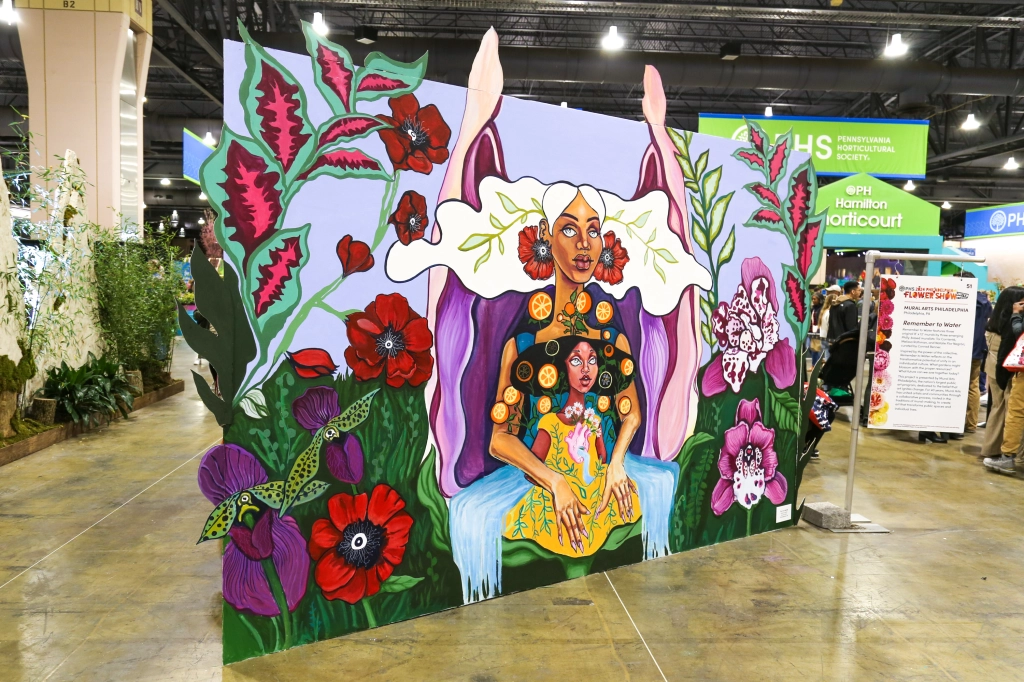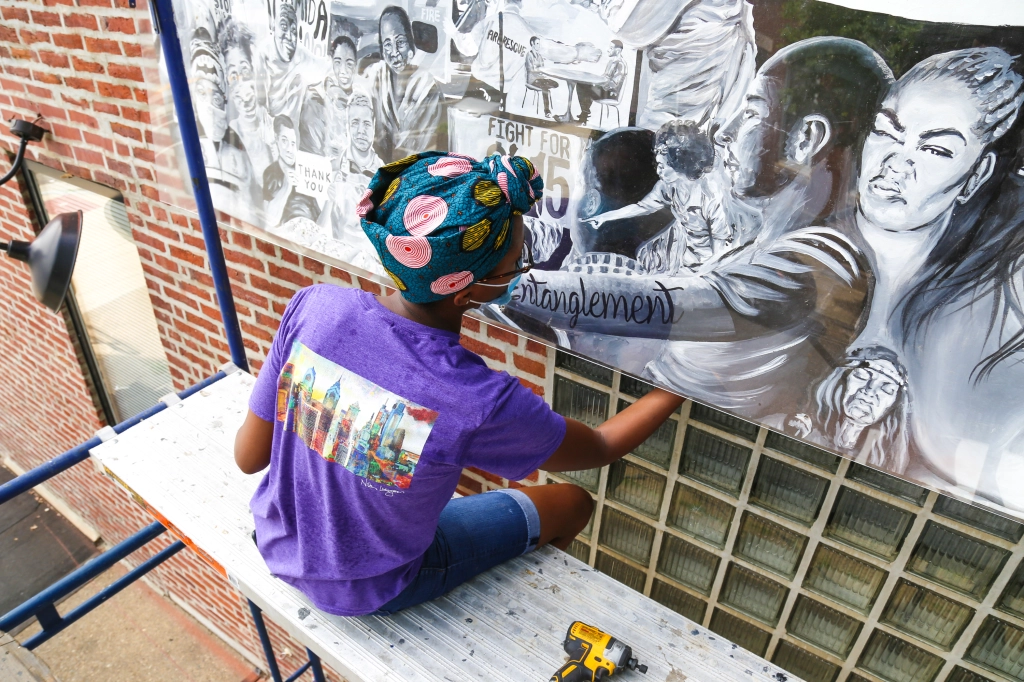
By Streets Dept Contributor Eric Dale
This article was originally published in the 2023 Streets Dept Magazine, released in January. You can get copies of our Streets Dept Magazine–both Issue #1 and Issue #2, for a limited time here.
In the last 12 months, Shira Walinsky has lost three murals in Philadelphia. Obviously, murals don’t last forever. But for one artist in one city over one year, that’s a lot.
“You couldn’t do this work if you were too precious about it.” Walinsky says. “But at the same time, you wouldn’t do [murals] if you didn’t feel that they were important or made some impact.”

Walinsky knows a thing or two about making an impact. She’s been a muralist with Mural Arts Philadelphia for more than 20 years, and has been the lead artist for their Southeast by Southeast initiative for the past 10. Through that program, she’s worked closely and extensively with Southeast Asian immigrant and refugee communities in Southeast Philadelphia.

Local residents really connect with her work. “Having a mural up is a reminder: this story is here, this community is here, our city is really diverse,” Walinsky says. “Our city has a lot of incredible history and dreams for the future, and it represents those things.”
But how can the Mural Capital of the World represent its residents and their history and dreams if the murals that capture and share those big ideas keep being destroyed?
*****
The problem of mural loss in Philly is a relatively recent one. When a scrappy Mural Arts was first getting started, many murals were painted with little formal agreement on how long a mural might exist, Walinsky says. “It was so unusual for murals to come down in the earlier days that it wasn’t really addressed.”

But with construction booming and property values on the rise in recent years, the vacant lots that provide airspace for murals are disappearing. This is what recently befell From The Mountains To The City, a Southeast by Southeast mural at 7th and Emily Streets that Walinsky painted in 2013.
Jane Golden, the founder and executive director of Mural Arts Philadelphia, laments the lack of consideration that the organization gave to potential development early on. “I never thought that we needed to be so highly strategic about the location,” she says. “But I see now that even the smallest lots, where we would guess oh nothing will ever happen there… Something will happen there.”
Golden estimates that 30 of their murals have been lost in the past five years—and the pace is picking up. “This last year has been hard,” she says. “As the city gentrifies faster, the murals go away faster. So it’s very concerning.”

In addition to in-fill, older buildings are rapidly being demolished. One that currently faces this potential fate is the former home of the Painted Bride Art Center, in Old City. Three sides of the building are covered by Skin of the Bride, a 7,000-square-foot mural created in 1991 by famed Philadelphia mosaic artist Isaiah Zagar.
For five years, Philadelphia’s Magic Gardens, which restores and preserves Zagar’s work throughout Philly (not just his massive South Street installation), has fought to save this mural, which is Zagar’s largest public piece. The saga is a rarity in two ways: it’s been remarkably high-profile, and it began before the destruction of the work in question.
In late 2017, the board of the Painted Bride Art Center announced plans to sell their building, which, it was presumed, would be razed for condos. A week later, the Magic Gardens nominated the building and its mural for historical designation, which was rejected the following year by the Philadelphia Historical Commission in a 5–4 vote. In 2019, the Bride accepted a bid placed by a developer planning 16 condos. But a judge prohibited the sale, citing the “irreplaceable” facade. When the developer came back to the table with an innovative “overbuild” design that would preserve the mural, proponents thought it was saved. But in January 2021, the local neighborhood association voted to oppose the zoning variances required for the plan. Nevertheless, the Zoning Board approved those variances, and the building was finally sold to the developer in April of 2022. But then in June, a judge reversed the zoning decision on appeal, putting the Painted Bride back in harm’s way.
For Emily Smith, the executive director of the Magic Gardens, much of the impetus for preserving murals like the one on the Painted Bride comes down to one fact: the artist who created them is 83. “A lot of the argument in those conversations was he can just make another one. There’s other ones like this. And the answer is no. There are no more 7,000-square-foot murals being made by Isaiah Zagar.”
Like Walinsky and Mural Arts, Smith has witnessed a sharp increase in mural destruction in recent years. But when she began looking into how to protect threatened works, she quickly discovered that there is no process in place to accomplish this. “It seems like the only thing that matters,” Smith says, is “owners who are sympathetic and are concerned about protecting the work.”
The developer’s desire to save the mural is what has so far kept the Painted Bride out of harm’s way. But in most cases, property owners, developers, and city officials are not particularly concerned with preserving murals—despite their benefits. As Smith puts it, “we know that creative placemaking can have positive impact for community and positive economic impact.” But that argument seems to usually be insufficient.
UPDATE: Since originally writing/publishing this story, it seems that this Painted Bride mural is again in harms way. And you can read the latest about that over at the Inquirer here.
As long as the building is still standing, Smith will be gushing over the Bride. “I think it’s a complete masterpiece of American folk art. There’s not ever going to be [another] one like it for Philadelphia. If you had saved it, in 50 years, this would be a place where people go to take tours. This is such a historical building. It has all of the stories of all these alternative artists from Philadelphia that are not with us anymore. These are stories that really matter, and to lose it is ridiculous.”
*****
Sometimes, it’s not even construction that threatens a mural. A few months ago, Walinsky’s Tiger’s Nest, at 7th and Shunk Streets, was painted over by the property owner after the Nepali grocery store that had previously occupied the first floor moved out. Apparently, the building’s owner thought the mural would be an impediment to attracting new tenants. “But he’s painting it this generic brown!” exclaims Walinsky. “It’s so strange, because you could keep that image at the top. If anything, it would draw interest to that spot.” Put another way: “It’s not a generic corner [anymore]. It’s a place.”
It’s true that murals change the character of the area where they’re installed—but whether that change is valuable or not comes down to your goals. For Walinsky, the goal of painting a mural is to reflect the lives, cultures, and histories of local residents. But as gentrification takes hold of a neighborhood, some building owners evidently may consider such murals a liability.

This raises the question of who owns a mural. The artist? The community? The public? The City? Mural Arts Philadelphia? The property owner? The property owner whose airspace allows the mural to be seen?
Walinsky and Smith agree: In most cases, when push comes to shove, a mural in Philly ultimately belongs to the owner of the building it’s painted on. In a city with notoriously easy-to-obtain demolition permits, that means murals can disappear almost overnight.
Sometimes, property owners can be convinced to participate in preservation discussions, but “the only way for that conversation to even happen is if the community is involved in it,” says Smith. “When people get upset that something’s being destroyed, that’s usually the only moment of pause.” Walinsky agrees, noting that “friends of” groups, which can rally neighbors to make noise, can be a valuable stopgap measure in these cases.
But the bottom line is that Philly has no procedures in place to compel property owners to engage with the artists, organizations, or communities behind murals. And that’s the problem. So what are possible solutions?
1. Shift the perception (and perhaps reality) of ownership
Preserving Philly’s history and legacy of community-focused mural-making may come down to changing the perception of who owns “public” art. When a mural is considered the domain of a property owner, it’s almost a foregone conclusion that the property owner will do what they want with it. But if murals were considered the domain of the community, or of the public as a whole, property owners might think twice before demolishing them or painting them out.
It certainly wouldn’t be out of bounds for the City itself to lay some amount of claim to its murals. “Philadelphia has a world class collection of public art, and it’s something that we should all be really proud of,” says Golden. “In some ways, it’s almost the autobiography of our city.” Allowing murals to disappear without due process could cause serious reputational harm to the city, so it would only behoove officials to work to protect them.
But there’s a more direct way to address the ownership issue: move away from handshake agreements. What if every mural was accompanied by a co-ownership contract between the property owner and the organization behind the mural? If a building owner wanted or needed to demolish a building, they would have to first “buy out” the other owner—thereby funding a replacement mural elsewhere. And if the property was sold, the obligations of the mural co-ownership contract would transfer with it to the new property owner. Contractual obligations could even be used to help with mural preservation issues!
2. Quantify the value of public art
“This can be an economic driver, and to invest in this thing can have great reward, not just for the community, but for [wallets],” says Smith. “Anyone who’s in this public art world understands that it’s so important for Philadelphia’s economy, it’s important for cultural placemaking, and it’s a great way for communities to be expressing themselves and having positive impact.” So perhaps a more rigorous accounting of the financial value of murals could move the needle. “If you go to legislators and you say this is an important part of the local economy, that’s pretty much the only way in with them.”
Walinsky suggests getting urban studies programs involved. In addition to researching the economic value of murals, students could assist with documenting the local history that bestows part of that value. “Even if it’s a small story of this woman who was an activist on her block… That is neighborhood history. That’s hard to find.”
Again, there’s an argument to be made that Philadelphia as a city should care about the value of its murals. The way Golden sees it, Philly is one giant art museum, and large-scale public artworks comprise its collection. But a museum can’t exist without a collection—so she’s worried. “If I were running a major museum in the city, I would be very concerned about the collection,” Golden frets.
3. Make it harder to demolish murals
Development is a continuous force, and it’s often beneficial. No one is saying that it can’t happen. But there seems to be a need for a balance between the goals of developers and the goals of the community or city at large. As Walinsky puts it, “as we develop more and more and other people decide what’s important, we lose the Philly that we love; the Philly that we want to live in.”
So perhaps a field could be added to property records in the city that flags buildings with murals on them. Requiring a review of this field during the demolition permitting process could provide the “moment of pause” that Smith is looking for. It would tell developers, in essence, hey, there’s something culturally important on this building, and someone needs to be notified about your plans to destroy it before you can proceed.
*****
Mural loss is a messy problem, and a perfect solution is unlikely to exist. “It’s always going to be unwieldy,” says Walinsky. Afterall, “this is Philadelphia.” But perhaps one or more of these ideas could help stem the destruction.
Maybe some of them are already beginning to transpire: Golden says that hearing from developers before a mural comes down has become a little more common. She’s also actively meeting with Philadelphia City Council members and mayoral candidates to advocate for the city’s collection. Walinsky continues to work on the community ownership angle, with an upcoming photographic retrospective at Bok showing 10 years of Southeast by Southeast’s community engagement.
And Smith is keeping an ear to the ground for the Painted Bride. Over the years, she’s built a good relationship with the developer who ended up buying the building, but that doesn’t guarantee anything. “At this point,” she says, “there is no protection on the building and the mural, and we don’t know what the outcome is actually going to be.”





Leave a comment